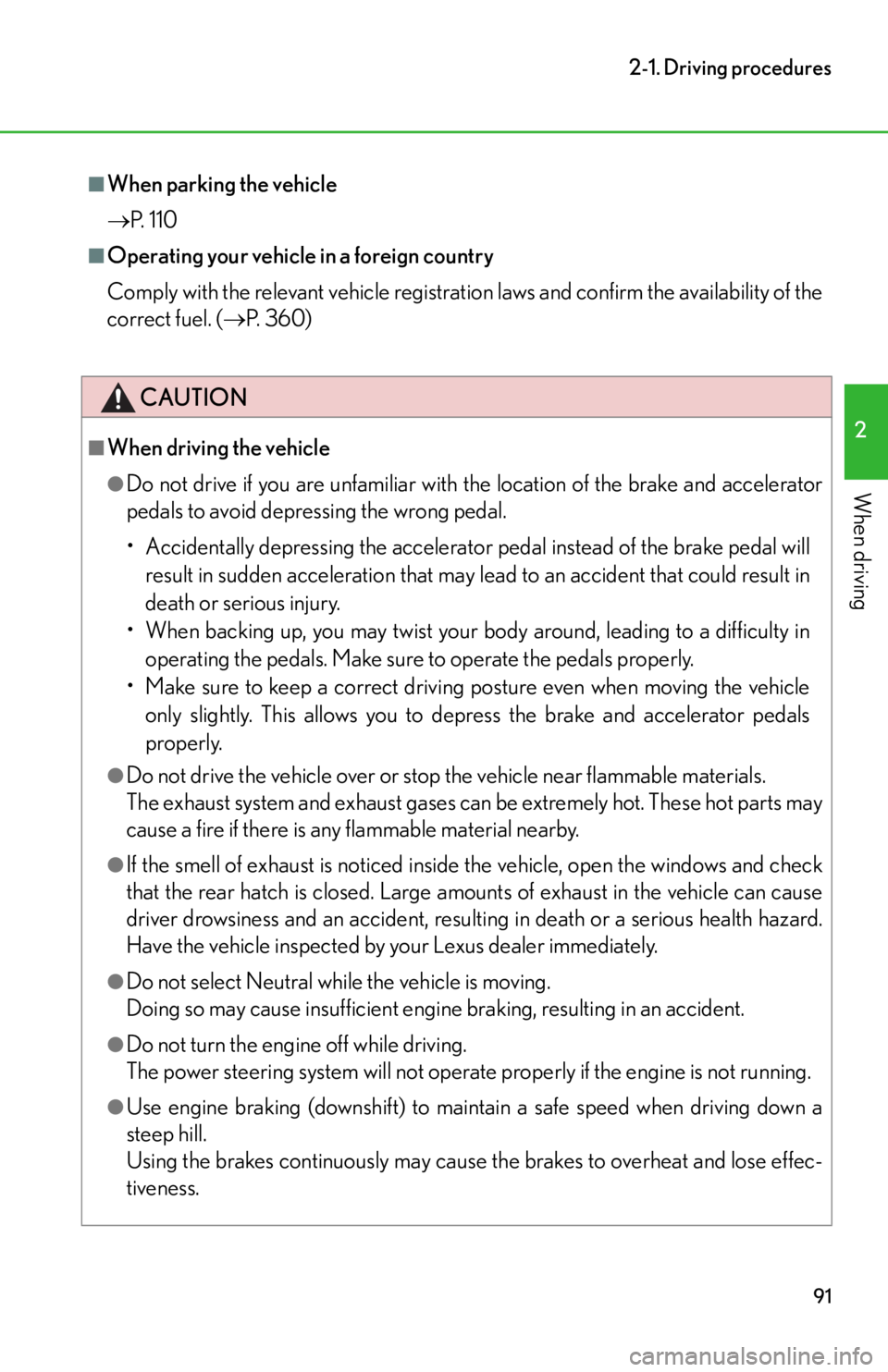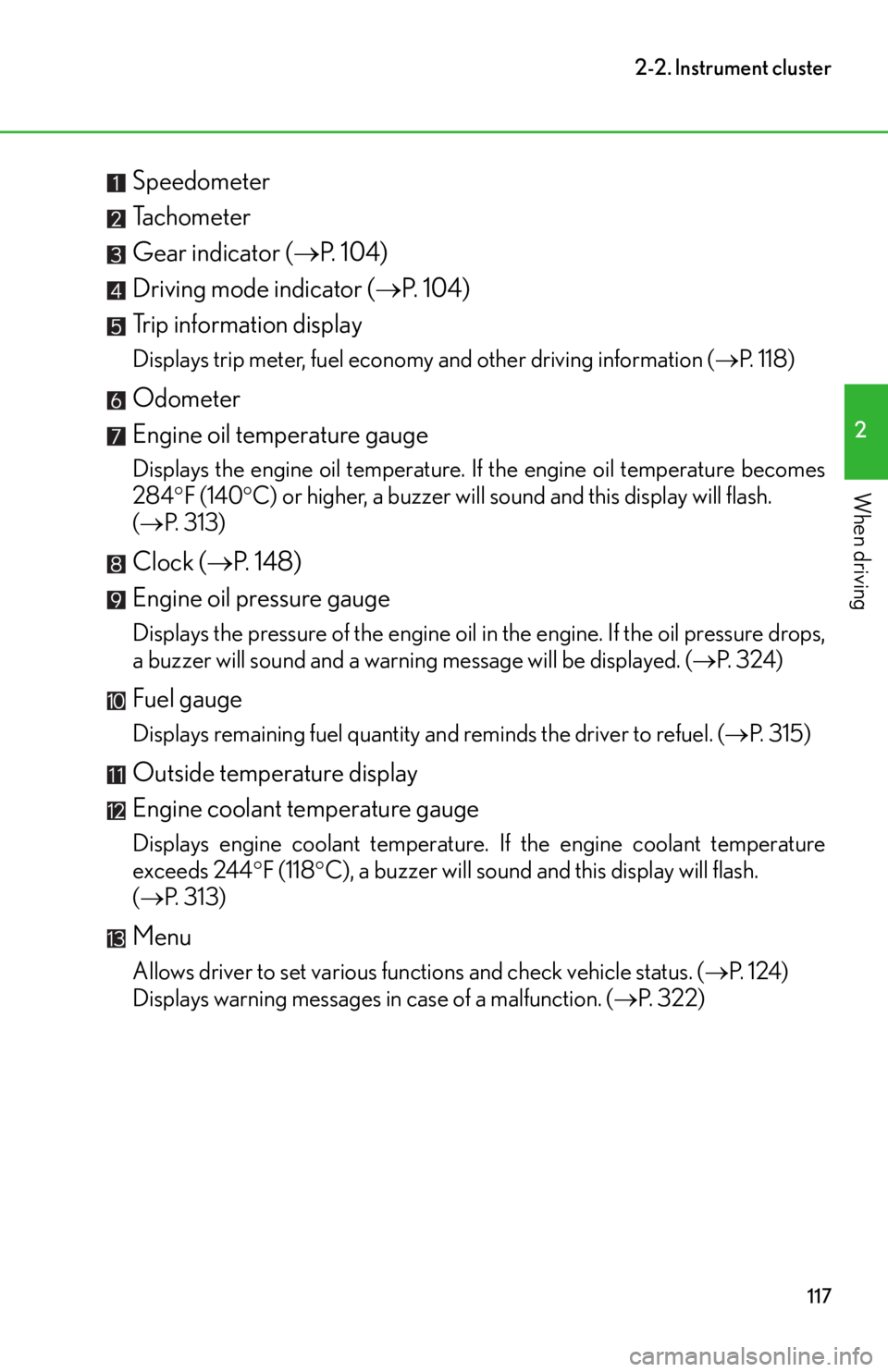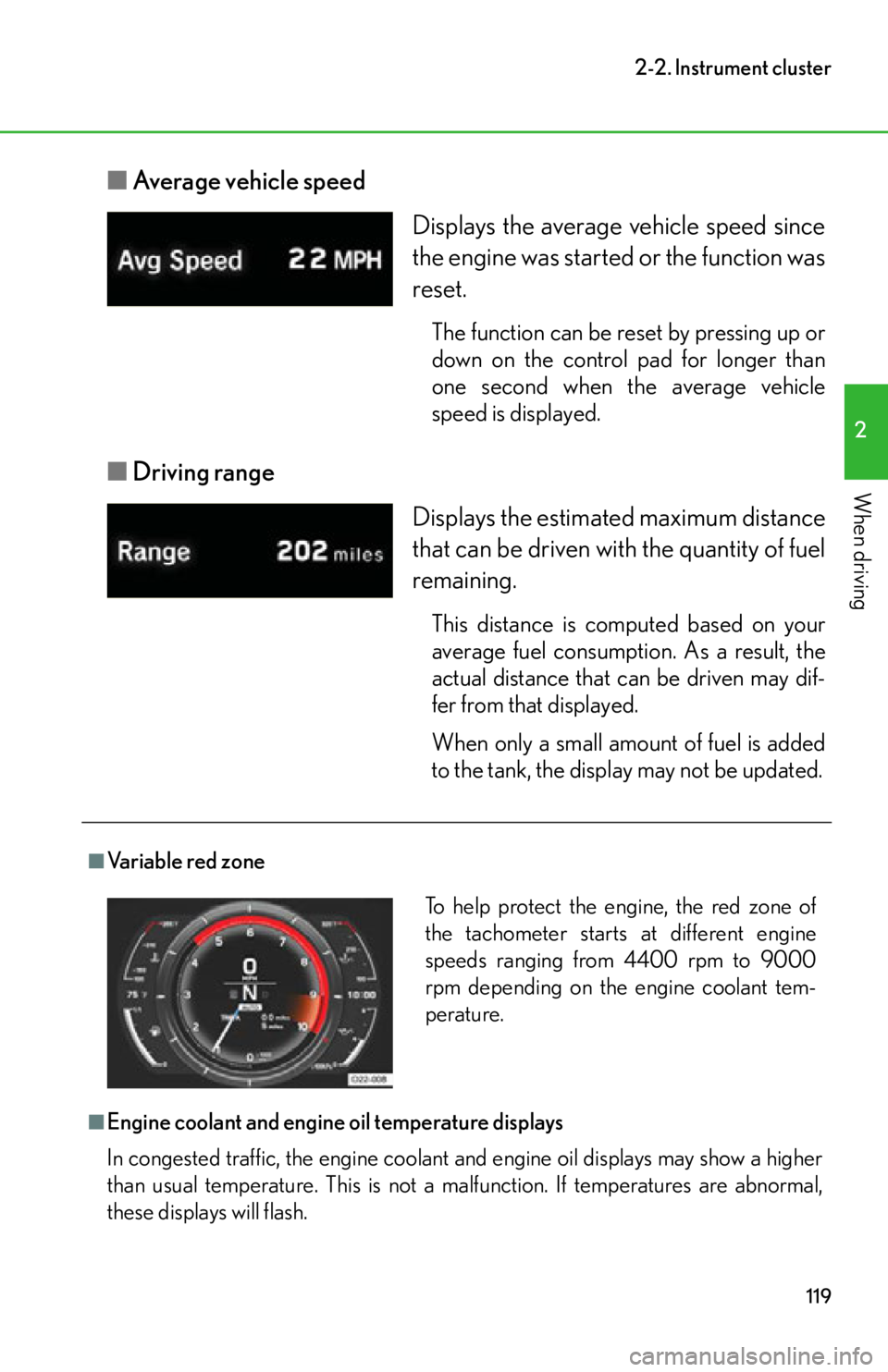Page 52 of 420
50
1-5. Refueling
Closing the fuel tank capAfter refueling, turn the fuel tank
cap until you hear a click. Once
the cap is released, it will turn
slightly in the opposite direction.
■When the fuel filler door opener switch is inoperable
The lever can be used to open the fuel filler door if the fuel filler door cannot be
opened using the inside switch because th e battery is discharged or for any other
reason.
Open the rear hatch. ( P. 2 9 )
STEP1
Remove the cover.
Pull the lever.STEP2
STEP3
Page 53 of 420

51
1-5. Refueling
1
Before driving
CAUTION
■When refueling the vehicle
Observe the following precautions while refueling the vehicle.
Failure to do so may result in death or serious injury.
●Touch a metal surface (such as a static discharge plate if available) to discharge
any static electricity. As the vehicle body is made of resin touching the vehicle
body will not discharge static electricity.
Sparks resulting from discharging static electricity may cause the fuel vapors to
ignite.
●Always hold the grips on the fuel tank cap and turn it slowly to remove it.
A whooshing sound may be heard when the fuel tank cap is loosened. Wait until
the sound cannot be heard before fully removing the cap.
In hot weather, pressurized fuel may spra y out the filler neck and cause injury.
●Do not allow anyone that has not discharged static electricity from their bodies to
come close to an open fuel tank.
●Do not inhale vaporized fuel.
Fuel contains substances that are harmful if inhaled.
●Do not smoke while refueling the vehicle.
Doing so may cause the fuel to ignite and cause a fire.
●Do not return to the vehicle or touch an y person or object that is statically
charged.
This may cause static electricity to build up , resulting in a possible ignition hazard.
■When refueling
Securely insert the fuel nozzle into the fuel filler neck. When the fuel tank is filled to
the maximum level, the automatic shut of f function will engage. Do not continue
fueling once the automatic shut off function engages, as this may result in fuel over-
flowing from the tank.
■When replacing the fuel cap
Do not use anything but a genuine Lexus fuel tank cap designed for your vehicle.
Failure to do so may cause a fire or other incident which may result in death or seri-
ous injury.
Page 54 of 420
52
1-5. Refueling
NOTICE
■Refueling
●Use only the specified premium-unleaded (unleaded high-octane) gasoline.
Never use regular unleaded gasoline, poor quality gasoline, diesel fuel, kerosene,
any type of alcohol-based fuel, or any type of fuel other than that specified for this
vehicle. Also, be careful not to mix up the fuel and washer fluid. Failure to follow
these precautions may cause damage to the vehicle.
●Do not spill fuel, as it may damage the vehicle's painted surface.
Page 92 of 420

90
2-1. Driving procedures
■Engine speed restrictions
The following restrictions exist for engine protection:
●The engine speed is limited to 7400 rpm if the total mileage shown on the
odometer is less than 310 miles (500 km).
●The engine speed is limited when the engine is not sufficiently warmed-up, such
as immediately after the engine is started or during the engine warm-up period.
The variable red zone shows the maximum engine speed currently available.
( P. 1 1 9 )
●The engine speed is limited to 4400 rpm for approximately 8 minutes when the
engine is started with the coolant temperature at 5 F (-15 C) or lower.
●The engine speed may be limited when either the coolant temperature gauge
or oil temperature gauge is flashing.
■Idling with five cylinders
To improve fuel consumption, the engine may idle at a reduced speed using five cyl-
inders on one side of the engine whil e stopped or immediately before stopping
when 1st gear is selected in AUTO driving mode. During this time, “5 cylinders
idling” will be displayed on the meter an d vibration or a change in engine sound
may occur. This is normal and does not indicate a malfunction.
■ASG (Automated Sequential Gearbox) operating sounds
P. 1 1 0
■Braking sound
●As the LFA uses CCM (Carbon Ceramic Material) brake discs with high-fric-
tion pads, it may be possible to hear the sound of the brakes operating (such as
a rubbing or squealing sound). This is normal and does not indicate a malfunc-
tion.
●The sound of a motor operating may be heard after the engine is stopped. This
does not indicate a malfunction.
■Driving in the rain
●Drive carefully when it is raining, because visibility will be reduced, the windows
may become fogged-up, and the road will be slippery.
●Drive carefully when it starts to rain, because the road surface will be especially
slippery.
●Refrain from driving at high speeds on wet surfaces such as on an expressway in
the rain, as the LFA is fitted with wide-t read tires that may increase the risk of
hydroplaning.
Page 93 of 420

91
2-1. Driving procedures
2
When driving
■When parking the vehicle
P. 1 1 0
■Operating your vehicle in a foreign country
Comply with the relevant vehicle registration laws and confirm the availability of the
correct fuel. ( P. 3 6 0 )
CAUTION
■When driving the vehicle
●Do not drive if you are unfamiliar with the location of the brake and accelerator
pedals to avoid depressing the wrong pedal.
• Accidentally depressing the accelerato r pedal instead of the brake pedal will
result in sudden acceleration that may le ad to an accident that could result in
death or serious injury.
• When backing up, you may twist your bo dy around, leading to a difficulty in
operating the pedals. Make sure to operate the pedals properly.
• Make sure to keep a correct driving posture even when moving the vehicle
only slightly. This allows you to depress the brake and accelerator pedals
properly.
●Do not drive the vehicle over or stop the vehicle near flammable materials.
The exhaust system and exhaust gases can be extremely hot. These hot parts may
cause a fire if there is any flammable material nearby.
●If the smell of exhaust is noticed inside the vehicle, open the windows and check
that the rear hatch is closed. Large amounts of exhaust in the vehicle can cause
driver drowsiness and an accident, resulting in death or a serious health hazard.
Have the vehicle inspected by your Lexus dealer immediately.
●Do not select Neutral while the vehicle is moving.
Doing so may cause insufficient engine braking, resulting in an accident.
●Do not turn the engine off while driving.
The power steering system will not operate properly if the engine is not running.
●Use engine braking (downshift) to maintain a safe speed when driving down a
steep hill.
Using the brakes continuously may cause the brakes to overheat and lose effec-
tiveness.
Page 119 of 420

117
2-2. Instrument cluster
2
When driving
Speedometer
Tachometer
Gear indicator (P. 1 0 4 )
Driving mode indicator ( P. 1 0 4 )
Trip information display
Displays trip meter, fuel economy and other driving information ( P. 118)
Odometer
Engine oil temperature gauge
Displays the engine oil temperature. If the engine oil temperature becomes
284 F (140 C) or higher, a buzzer will sound and this display will flash.
( P. 313)
Clock ( P. 1 4 8 )
Engine oil pressure gauge
Displays the pressure of the engine oil in the engine. If the oil pressure drops,
a buzzer will sound and a warning message will be displayed. ( P. 3 2 4 )
Fuel gauge
Displays remaining fuel quantity an d reminds the driver to refuel. (P. 3 1 5 )
Outside temperature display
Engine coolant temperature gauge
Displays engine coolant temperature. If the engine coolant temperature
exceeds 244 F (118 C), a buzzer will sound and this display will flash.
( P. 313)
Menu
Allows driver to set various functions and check vehicle status. ( P. 1 2 4 )
Displays warning messages in case of a malfunction. ( P. 3 2 2 )
Page 120 of 420
118
2-2. Instrument cluster
Trip informationThe information on the trip infor-
mation display can be changed
when in the normal display by
pressing up or down on the control
pad.
■ Trip meter
■ Current fuel consumption
■ Average fuel consumption
Displays the distance the vehicle has been
driven since the meter was last reset. Trip
meters “A” and “B” can be used to record
and display different distances indepen-
dently.
The function can be reset by pressing up or
down on the control pad for longer than
one second when the trip meter “A” or “B” is
displayed.
Displays the current rate of fuel consump-
tion.
Displays the average fuel consumption
since the function was reset.
The function can be reset by pressing up or
down on the control pad for longer than
one second when the average fuel con-
sumption is displayed.
Page 121 of 420

119
2-2. Instrument cluster
2
When driving
■Average vehicle speed
■ Driving range
Displays the average vehicle speed since
the engine was started or the function was
reset.
The function can be reset by pressing up or
down on the control pad for longer than
one second when the average vehicle
speed is displayed.
Displays the estimated maximum distance
that can be driven with the quantity of fuel
remaining.
This distance is computed based on your
average fuel consumption. As a result, the
actual distance that can be driven may dif-
fer from that displayed.
When only a small amou nt of fuel is added
to the tank, the display may not be updated.
■Va r i a b l e r e d z o n e
■Engine coolant and engine oil temperature displays
In congested traffic, the engine coolant and engine oil displays may show a higher
than usual temperature. This is not a ma lfunction. If temperatures are abnormal,
these displays will flash.
To help protect the engine, the red zone of
the tachometer starts at different engine
speeds ranging from 4400 rpm to 9000
rpm depending on the engine coolant tem-
perature.